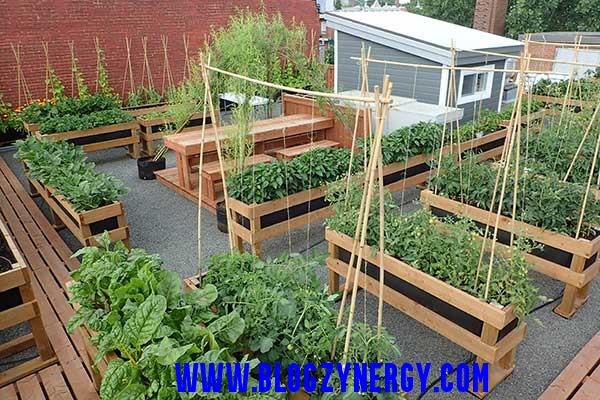Let me start like this…
As the world community is growing day by day, we as people must think how to produce more food on long term, without hurting the nature. In this blog I would like to send some triggers to Governments/Policymakers and other important/relevant authorities in the Caribbean Region especially Suriname and Guyana. A certain mind set is needed in combination of a long term mission and vision on this subject.
WHAT IS A FOODSCAPE?
A foodscape is simply the integration of edible plants in traditional ornamentallandscapes (around our very own living space). It is all about creating the most of the square footage you have access to.
WHY FOODSCAPE?
· Utilize an ornamental base for yourself
· Increase bio‐diversity step by step
· Beneficial insects will be around you
· Reduced disease/stress
· Manage all organically
· Select your own choice of plants to create an engaging space
· Conversation starter all the time
· Grow in containers, window boxes and vertical systems
· Alternative growing systems are easy to do
· Rooftops offer plenty plenty sunny square meters to run this business
· Think outside of the box
· Use the existing landscape
· Full sun in the Caribbean
· Easily irrigated
· Maintain regularly
· Grow on YOUR terms… it is a wonderful hobby
Sample Mission Statement
Our/My mission is to empower our/my customers with foodscape structures, protocols and plants that make producing food simple and lasting, accessible and serviceable to a broad customer demographic.
We/I aim to be knowledgeable, innovative and uncommonly helpful as we foster a greener world for the future.
Sample Vision Statement
Our/My vision is to restore the balance between green space (plants) and hard space (concrete, steel, glass) wherever you are.
We aim to create a greener more hospitable planet Earth by proclaiming the benefits of plants and helping ourself/clients to successfully install and cultivate them (also on vertical surfaces).
Some Benefits of Foodscaping
Foodscaping offers a variety of benefits, many of which are a result of fulfillment of the human need to connect with nature. The research study which is also known as ‘biophilia,’ a growing field of study that emphasizes the physiological and resultant economic benefits that come from restoring natural connections in our built environment.
Performance + Productivity
Our innate need to connect with nature is known as biophilia. This is the serious driving force behind our boost in mood, sharper focus, and stronger immune system when we are exposed to natural environments. Foodscaping is a great way to trigger the biophilic response and improve performance and productivity (for everyone).
Better Attendance
Workplaces/enviroments which incorporate biophilic design elements such as access to nature have reduced absenteeism, fewer complaints, and improved staff retention. Happy people will be around.
Reduce Fatigue/Stress
Providing access to nature in the workplace can reduce eyestrain, relieve mental fatigue, and improve focus on tasks during the day, but also at night.
Increase Output
Integrating plants into workplaces yields productivity gains and reduced psychological stress and pshycological pressure.
Enhance Performance
Students exposure to nature has been correlated with higher academic performance in Mathematics and English.
Improve Focus
Studies/researches have also demonstrated that exposure to nature eases symptoms of Attention-Deficit/Hyperactivity Disorder (ADHD).
Attract Customers
Shoppers will stay longer in stores and visit more frequently when plants are heavily prevalent inside and outside retail settings. Believe it or not.
Stronger Sales
Consumers might purchase more merchandise and are surely willing to pay higher prices for goods when surrounded by nice nature.
Higher Rents
Foodscaping environments can be used to improve the view in leased space, translating into more dollars guests or tenants are willing to spend during their staying.
Recover Faster
Patients who physically interact with plants use less medication and experience significantly reduced recovery times after medical procedures.
Enhance Experience
Using plants and planted walls as well in healthcare enhances the experience of patients, visitors and staff, who report greater satisfaction and positive feelings in the presence of nature.
Ease Anxiety
Did you know that researchers have found lowered cortisol levels and reduced reported anxiety levels correlating with access and interaction with plants.
Positive Emotions
Colors can have an effect on our/my very own emotions. Green is linked to safety, so green foliage typical of indoor plantings create a comforting environment. Think about it.
Food Production
Food scaping and especially vertical gardens are a popular solution in the rising urban farming movement as horizontal space can be difficult to come by in densely populated areas. Yes even in rural and suburban areas, restaurateurs, senior caregivers, healthcare providers, and homeowners are turning to food scaping and vertical farming for affordable, low-maintenance food production.
Living Art
Good food scaping (vertical green walls) can serve as a means of expression, creating a unique space for people to express themselves in various ways.
Balanced Solutions
Good Landscaped communities are more attractive to tourists and shoppers, and community planners can balance the desire for greenness with the desire for wide, welcoming sidewalks through green food producing walls.
The plants in the living wall cool and beautify neighborhoods without taking up ground space, and surface runoff can be collected, treated and used for irrigation, reducing site runoff.
Community Bonds on Long Term
Similarly, nice green communities correlate with increased sense of pride and place, levels of trust, and civic participation. Residents in nice green communities spend more time outdoors and forming bonds with neighbors. You don’t have to agree with me.
Increased positive public sentiment can support other community goals, such as maintaining population levels that bolster a community’s economic sustainability and stability. This will increase more love for food scaping.
Healthy Food
When used to grow herbs and vegetables, produce from a living vertical wall provides supplemental food that is healthy for our body and the environment.
Children—and adults—who are involved in the process of growing their own food are more likely to have healthier diets.
Closing Statement
I really hope to have triggered you with this short blog.
Let us collectively spread this message further and start to create lovely green producing communities not far from home.
If you have any other suggestions/ideas, feel free to drop them down in the comments here below.
If everyone join together and do their part, the results will be sun shining very quickly. Meh done talk ! Do deh Ting…
Join the Telegram Group : t.me/blogzynergy


